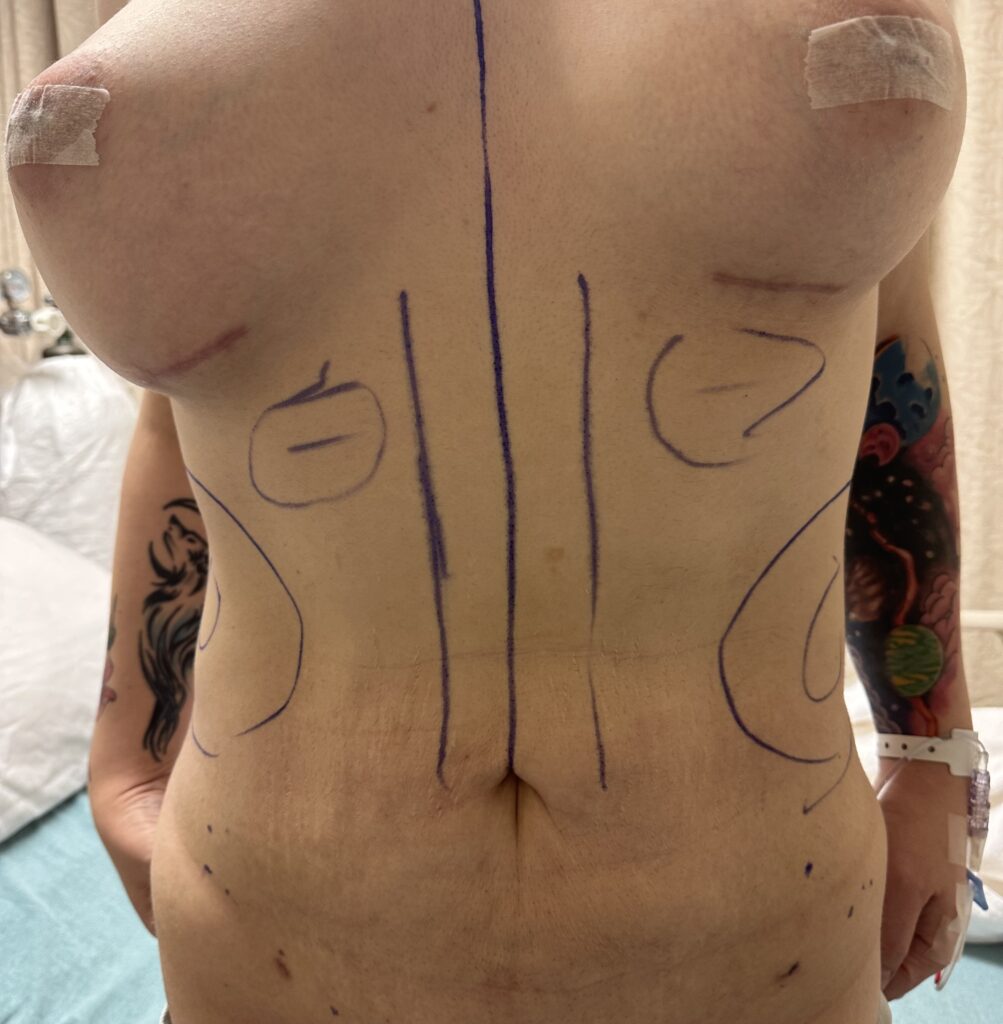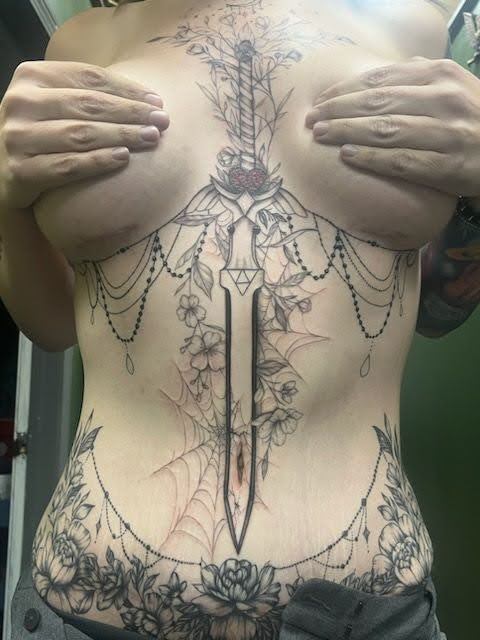
Body Contouring

What is Body Contouring surgery?
Body Contouring surgery is a surgery to sculpt and contour the abdomen, flanks, back, and eremites to give a body shape more in line with your gender presentation. There are three main goals to body contouring surgery
1. Remove fat tissue and sculpt
2. Remove excess skin if needed
3. Add volume to areas that are desired to be more full
Each patient’s surgery and results are different.
What to consider
Before your first consultation, we encourage you to:
· Consider your goals and priorities of surgery.
· Write down your questions and bring them with you to your visit.
· Ask a support person to come with you. Ideally, this is the same person who will care for you after surgery.
Your First Consultation
Your first consultation is an opportunity for us to learn about your hopes and goals. You will be given a questionnaire to help us meet your needs and measure the results. Your surgeon will review various surgical options and explain the process.
Once we understand your goals, we will:
• Evaluate your anatomy.
• Pre operative pictures will be taken
• Assess your overall health to see which surgeries can meet your goals. You may be asked to lose weight or make lifestyle changes to prepare your body for surgery.
A fair amount of time is spent during the consultation with your surgeon, but you may also meet the other members of your care team.
Body Contouring Options
There are many techniques that are available and the names may be different from office or office. We will cover the most common techniques for body contouring surgery.
Liposuction or Suction Assisted Lipectomy
In this procedure fat is removed with a small suction cannula through very small incisions in the are that is being treated. This permanently removes fat from that area to reduce volume of the body.
Ideal candidate: Someone at a stable weight with excess tissue in the body that does not aline with your gender expression.
Surgical approach: Will change from area being treated but will be very small incision usually 1cm or smaller.
Limitations: Not a weight loss treatment. Only for body shaping. Areas treated will gain and loose weight with changes in body weight but will always be less volume then before treatment
Skin Excision: Abdominoplasty (Tummy Tuck) Brachioplasty (Arm reduction) Monsplasty
If significant volume is removed from liposuction or you have loose skin you may benefit from excision or removal of excess tissue. This skin and soft tissue is permanently removed improving the shape of the area being treated.
Ideal candidate: Someone at a stable weight that is looking to contour the body by removing excess skin to improve the shape of the body.
Surgical approach: Will vary from area being treated but will involve and incision on the skin where the tissue is to be removed. These can be rather large scars and will depend on the area treated and your specific anatomy this will be discussed during your consultation.
Limitations: Best for people at a stable weight. This trade off of loosing the loose excess skin is the creation of a scar.
Fat grafting, or Lipofilling
In this case fat harvested from another area of the body such as the abdomen, flanks, back and others is injected into another part of the body to bring more volume to that area. This is a great way to add more balance to the body and to get a shape that fits your gender goals.
Ideal candidate: Someone at a stable weight that is looking to contour the body by adding soft tissue in the form of fat to other locations of the body.
Surgical approach: Will vary from area being treated but fat will be removed by liposuction as above and will be injected through small incisions in the area where the fat is being placed.
Limitations: Best for people at a stable weight. Each area is only able to accommodate so much fat. This will differ from patient to patient and the area being treated. We must also have enough fat to inject. In those that are very thin there may be limited amount of fat that can be harvested. Some areas particularly breast may need several sessions in order to get desired outcomes.
After Care
Maximizing Healing
We like to think about surgery like running a marathon. You will be stressing your body and will have to do significant healing. In the weeks to months before surgery maximizing your health both mental and physical will help you recover more quickly
• We recommend getting about 0.5 gram of protein per weight in lb a day to maximize healing Ex 150lb x 0.5=75g of protein per day
• We also recommend reducing sugar and processed foods
• We recommend keeping active before having surgery. Keeping up with or adding a workout plan will help your overall health and help heal more quickly. We understand that we all have different physical capabilities but even adding daily walking, home yoga, or simple homework outs with body weight can help.
Stopping smoking/nicotine
Why is it important?
Nicotine is a powerful drug that constricts your blood vessels and decreases blood flow to the tissues we are operating on. This can cause complications, including poor or delayed wound healing and graft failure. Research shows that risk of surgery failure increases 10 times for people who smoke even one cigarette a day.
How long do I need to be nicotine free?
We require that people not smoke or use any nicotine or tobacco products for at least three months before surgery.
What about nicotine patches, gum, e-cigarettes, etc.?
All of these products are a healthier alternative to smoking tobacco, but they all contain nicotine. They can have a similarly negative effect on wound healing. Therefore, we require that you not consume any of these products for three months before surgery.
What about marijuana?
If you use cannabis, please do not smoke or inhale THC or CBC products for at least six weeks before surgery. THC/CBC consumption can increase the amount of anesthesia medication needed during your surgery, and therefore reduction or cessation is encouraged six weeks prior to surgery.
Controlling diabetes
Why is it important?
People with diabetes may have greater risk of poor healing and infections, especially if their diabetes is not well controlled. Your primary care provider or endocrinologist can help you make sure your diabetes is under control before surgery.
Weight Loss
Why is my weight important?
We understand that beauty comes in all shapes and sizes. You don’t have to be skinny to be healthy.
However, the closer to ideal weight will give the best cosmetic outcome in the future. We do not have a BMI cutoff but will discuss how weight my impact your results.
What resources are available to help me lose weight?
Contact your primary care provider to discuss healthy ways to lose weight. Your provider might be able to refer you to a nutritionist, dietitian or gym. Some prescriptions can help with weight loss when used with exercise and a healthy diet. We have operated on patients after successful weight loss surgery.

